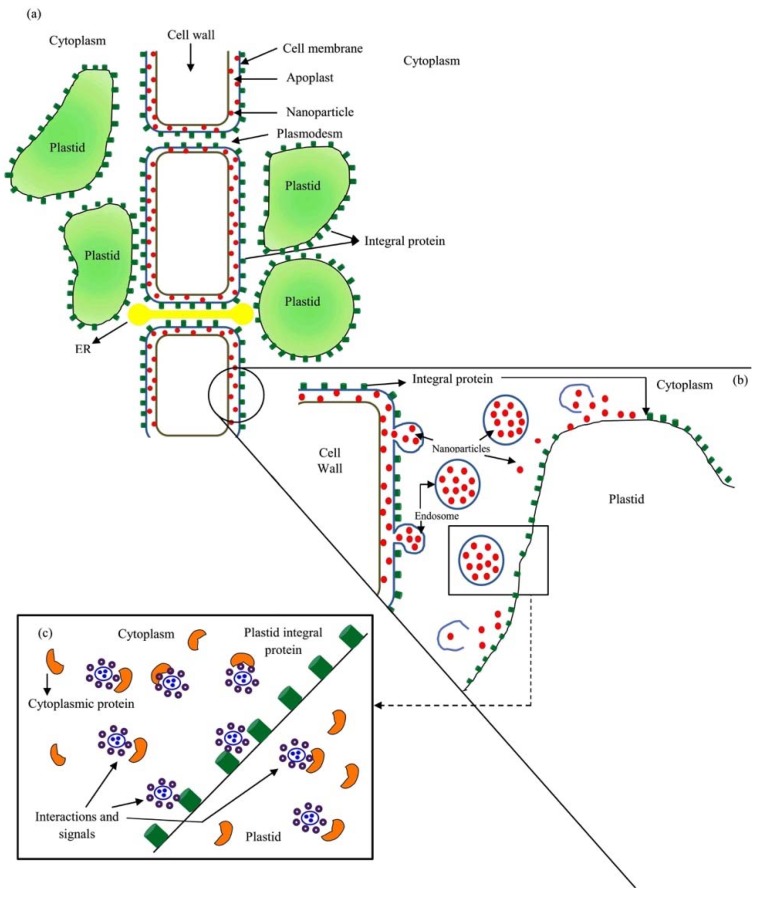Figure 4.
The interaction between nanoparticles or nanomaterials with cell surfaces. (a) Binding occurs to the cell wall or the membrane through to the free energy or charged groups of the surface of the corona surrounding the NP or NM, as well as to hydrophobicity phenomena that causes aggregation between surfaces. (b) Subsequently to the binding to the cell wall or membrane, the NP or NM is admitted to the cytoplasm due to direct internalization, endocytosis phenomena, or pore formation. (c) Once the NP is internalized to the cytoplasm, interactions with cytoplasmic proteins, internal membranes or organelles occur, which causes a series of metabolic adjustments and changes in gene expression that are signaled to other cells located in another tissues or organs of the plant. In this phase, it can happen that the interaction of the NP and the cellular medium release components (such as Cu2+ from a copper NP) that in turn trigger other cellular responses.

